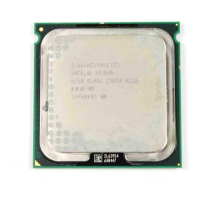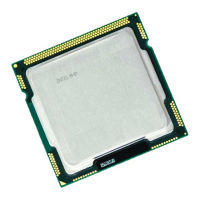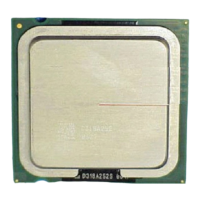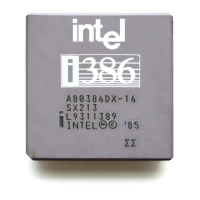Dual-Core Intel® Xeon® Processor 5100 Series Thermal/Mechanical Design Guide 33
Thermal/Mechanical Reference Design
Equation 2-7.Ψ
CA
= (T
CASE
– T
LA
) / TDP = (68 – 40) / 85 = 0.33 °C/W
It is evident from the above calculations that, a reduction in the local processor
ambient temperature has a significant positive effect on the case-to-ambient thermal
resistance requirement.
2.3.3 Chassis Thermal Design Considerations
2.3.3.1 Chassis Thermal Design Capabilities and Improvements
One of the critical parameters in thermal design is the local ambient temperature
assumption of the processor. Keeping the external chassis temperature fixed, internal
chassis temperature rise is the only component that can affect the processor local
ambient temperature. Every degree gained at the local ambient temperature directly
translates into a degree relief in the processor case temperature.
Given the thermal targets for the processor, it is extremely important to optimize the
chassis design to minimize the air temperature rise upstream to the processor (T
rise
),
hence minimizing the processor local ambient temperature. Please refer to T
RISE
Reduction Guidelines for Rack Servers and Workstations for more details.
The heat generated by components within the chassis must be removed to provide an
adequate operating environment for both the processor and other system components.
Moving air through the chassis brings in air from the external ambient environment and
transports the heat generated by the processor and other system components out of
the system. The number, size and relative position of fans, vents and other heat
generating components determine the chassis thermal performance, and the resulting
ambient temperature around the processor. The size and type (passive or active) of the
thermal solution and the amount of system airflow can be traded off against each other
to meet specific system design constraints. Additional constraints are board layout,
spacing, component placement, and structural considerations that limit the thermal
solution size.
In addition to passive heatsinks, fan heatsinks and system fans, other solutions exist
for cooling integrated circuit devices. For example, ducted blowers, heat pipes and
liquid cooling are all capable of dissipating additional heat. Due to their varying
attributes, each of these solutions may be appropriate for a particular system
implementation.
To develop a reliable, cost-effective thermal solution, thermal characterization and
simulation should be carried out at the entire system level, accounting for the thermal
requirements of each component. In addition, acoustic noise constraints may limit the
size, number, placement, and types of fans that can be used in a particular design.
2.4 Thermal/Mechanical Reference Design
Considerations
2.4.1 Heatsink Solutions
2.4.1.1 Heatsink Design Considerations
To remove the heat from the processor, three basic parameters should be considered:
• The area of the surface on which the heat transfer takes place - Without any
enhancements, this is the surface of the processor package IHS. One method used
to improve thermal performance is by attaching a heatsink to the IHS. A heatsink

